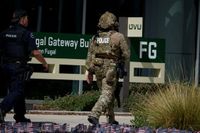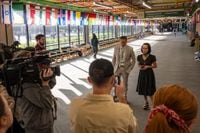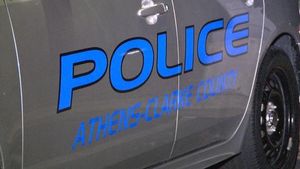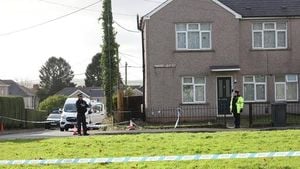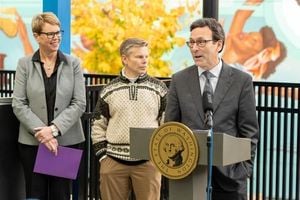The shooting death of conservative commentator Charlie Kirk at Utah Valley University on September 10, 2025, has left the nation grappling with questions of political violence, campus security, and the role of the media in times of crisis. As investigations continue and theories swirl, the fallout from Kirk’s assassination has touched everything from university policy to national debates about free speech and public safety.
According to multiple news outlets, including KSL and The New York Times, Kirk was shot at 2:23 p.m. Eastern time during a Turning Point USA event attended by over 3,000 people. The gunman, later identified as 22-year-old Tyler Robinson of St. George, Utah, fired from a rooftop, fatally wounding Kirk in front of a stunned audience. The event, which was held outdoors, had significant but ultimately insufficient security measures in place: six uniformed police officers, several plainclothes officers, and Kirk’s own security team were present and collaborating with campus public safety officials.
In the immediate aftermath, confusion reigned. Conflicting reports about the suspect’s status emerged: Utah officials initially stated they were still searching for the shooter, while FBI Director Kash Patel announced a “subject” was in custody. Patel later clarified that the individual had been released and the search continued. As Greg Shaffer, a retired FBI special agent and former security director for Turning Point USA, told KSL, such missteps are not unusual in the chaotic early hours of a manhunt, but they can undermine public trust. “It wasn’t a good look for a bureau who’s, you know, trying hard to gain back the faith and trust of the American public,” Shaffer remarked.
Shaffer also highlighted what he saw as lapses in event security, noting that both Kirk and the audience were left vulnerable. He explained that investigators would likely be working to build rapport with Robinson rather than interrogating him aggressively, in hopes of coaxing out critical information. “They’re becoming friends with him,” Shaffer said. “They are treating him with kid gloves. That’s how you get information.”
As the investigation unfolded, Utah Valley University (UVU) took decisive action. On September 22, UVU President Astrid Tuminez announced the launch of an independent, third-party review of campus security practices in response to the shooting. “We believe the findings of the comprehensive, third-party independent review of this targeted act of violence will offer valuable insights on how college campuses improve response and preparedness moving forward,” Tuminez stated. The university has since increased law enforcement presence on campus, though operational details remain confidential for security reasons. The campus was closed to students for a week following the shooting, and many returned still shaken by the violence, as reported by FOX 13.
The Utah Legislature’s School Security Task Force also weighed in, emphasizing the need for evidence-based solutions and a respectful, fact-driven discourse. During a Monday meeting, Ogden Republican Sen. Ann Millner read a prepared statement: “Once the review and criminal investigation are complete, that will be the appropriate time for thoughtful conversations. Right now, we need to allow them to proceed without distractions.” Millner stressed that the Legislature’s role was to support the FBI, the Department of Public Safety, the Board of Higher Education, and UVU in conducting thorough reviews. “We pursue real, evidence-based solutions, grounded in facts, not speculation or emotional reactions,” she added.
The shooting and its aftermath quickly became a flashpoint in the national conversation about political violence and free speech. The New York Times reported that the story drew unprecedented public attention, with searches related to Kirk’s death eclipsing any other news topic so far in 2025. The Times published over 100 pieces about Kirk and the broader implications in the six days following the event, reflecting not only the shock of the assassination but also the deep polarization in American society. The coverage itself became part of the story, as readers from across the political spectrum questioned the volume and tone of reporting, the choice of language to describe Kirk, and the handling of graphic footage from the scene.
“There is no question that Kirk was a polarizing figure in American politics, and it would be hard to find agreement about how to accurately describe him among those who liked him and those who did not,” said Times national editor Nestor Ramos in a behind-the-scenes discussion of the paper’s coverage. The editorial team wrestled with how to balance sensitivity with directness, especially given the graphic nature of some of the available video footage. “The goal was to be sensitive but direct about what the world had now seen on video, and cleareyed about who Kirk was,” Ramos added.
In the rush to cover breaking news, separating fact from rumor proved especially challenging. The Times detailed how, in the hours after the shooting, an older man was wrongly arrested and later charged with distracting police by falsely confessing to the crime. Other rumors—such as claims about shell casings etched with political messages, or the suspect’s supposed political donations—were carefully investigated and, in some cases, debunked. For example, Nicholas Bogel-Burroughs, a Times reporter, tracked down the real donor to Donald Trump’s campaign with the same name as the suspect and confirmed they were different people.
As for Robinson’s motives, the picture remains complex. While some initial reports speculated about political ideology, messages from Robinson and interviews with his family suggest he may have been angered by what he perceived as hateful speech by Kirk, particularly regarding LGBTQ issues. Still, as Ramos noted, “with the stakes this high—the suspect’s political leanings were one of the first questions everyone had after the shooting—we really needed to be more than sure when reporting anything about his views.” The investigation continues, with Robinson scheduled to return to court in Provo in the week following September 22.
The university community and broader public are left to reckon with the implications. Sen. Millner’s statement captured the prevailing sentiment: “There’s no place for violence here in Utah on our college campuses or in this country, our universities must remain marketplaces of ideas, places where students, faculty and the broader community can engage in open, respectful and vigorous debate.”
As UVU’s independent review moves forward and the criminal investigation continues, many hope that lessons learned from this tragedy will help prevent future acts of violence and foster a safer, more open environment for debate and free expression on America’s campuses. For now, the nation watches closely, seeking clarity, accountability, and a way forward after a moment that has shaken so many to their core.
